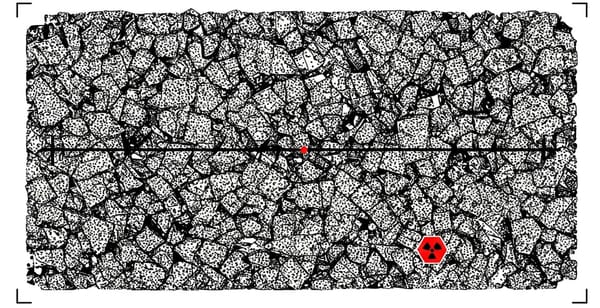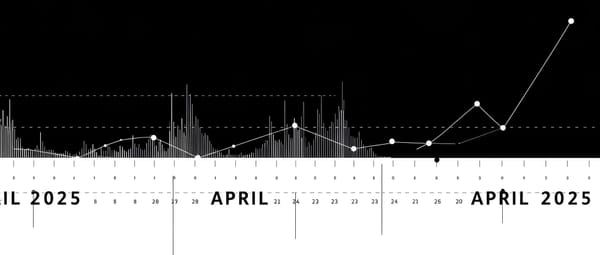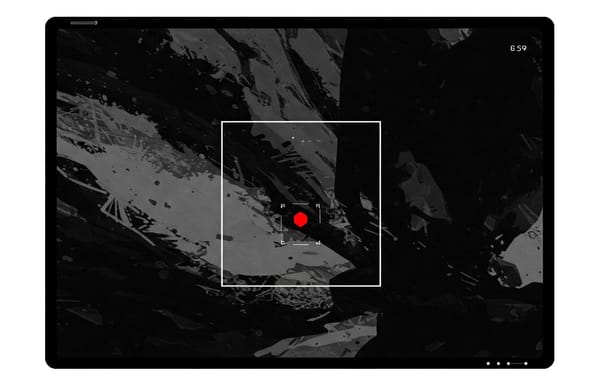Why Have Dirty Bombs Not Been Used?
A "dirty bomb" is a radiological dispersal device (RDD) that combines explosives with radioactive material. While relatively easy to construct, they are not efficient killing devices and pose technical challenges for dispersion. International condemnation and severe consequences deter their use.

A "dirty bomb" is a type of radiological dispersal device (RDD) that combines a conventional explosive, such as dynamite, with radioactive material1. The term "dirty bomb" is often used interchangeably with RDD in the media1. While relatively easy to construct 2, a dirty bomb is not a nuclear weapon. It is considered a "weapon of mass disruption" that can cause fear and panic, contaminate property, and require costly cleanup3. Despite this, dirty bombs have not been widely used in terrorist attacks. This raises the question: why?
What is a Dirty Bomb?
A dirty bomb is a device that uses conventional explosives to disperse radioactive material4. It is not the same as an atomic bomb, which involves splitting atoms and releasing a massive amount of energy5. Instead, a dirty bomb uses explosives to scatter radioactive dust, smoke, or other material to cause radioactive contamination5. Radiological dispersal devices could also involve other means of dispersal, such as placing a container of radioactive material in a public place or using an airplane to disperse powdered or aerosolized forms of radioactive material6.
Potential Effects of a Dirty Bomb
The effects of a dirty bomb depend on several factors. These include the size of the explosive, the amount and type of radioactive material used, how it is dispersed, and weather conditions3. Those closest to the RDD would be the most likely to be injured due to the explosion3. As radioactive material spreads, it becomes less concentrated and less harmful3.
A dirty bomb can produce unsafe levels of radiation, potentially leading to acute radiation sickness7. Symptoms of radiation sickness include vomiting and diarrhea7. Exposure to radiation can also increase a person's chances of getting cancer7.
In addition to the physical effects, a dirty bomb could have a serious psychological impact by causing fear and panic8. It could also result in radioactive contamination of up to several city blocks, which would require decontamination before they could be lived in or worked in again8.
Types of Radiation and Their Effects
There are different types of radioactive materials that emit different kinds of radiation, each with varying levels of penetration and potential health effects: 6
- Gamma and X-rays: These can travel long distances in the air and pass through the body, exposing internal organs. They are also a concern if gamma-emitting material is ingested or inhaled.
- Beta radiation: This can travel a few yards in the air and, in sufficient quantities, might cause skin damage. Beta-emitting material is an internal hazard if ingested or inhaled.
- Alpha radiation: This travels only an inch or two in the air and cannot penetrate the skin. However, alpha-emitting material is a hazard if it is ingested or inhaled.
Deterministic vs. Stochastic Injuries
Radiation exposure can cause two types of injuries: 9
- Deterministic injuries: These occur when an individual receives a known exposure to radiation and becomes ill as a result. Examples include radiation sickness (hematological effects, loss of appetite, vomiting, gastrointestinal damage, hair loss, death) or radiation burns on the skin. Generally, the threshold dose for deterministic injury is quite high.
- Stochastic injuries: These are based on the assumption that any radiation dose, no matter how small, can cause harm, and that the biological response increases with the size of the dose. It is conceivable that some individuals exposed to quite small doses of radiation might develop cancers.
The effects of radiation exposure are determined by several factors: 3
Historical Instances of Dirty Bomb Threats or Considerations
While a large-scale dirty bomb attack has never been carried out, there have been instances where the use of such a device was threatened or considered, and one documented instance of a small-scale attack:
- 1987, Goiânia, Brazil: Two scavengers stole a teletherapy source capsule containing cesium-137 from an abandoned clinic. They took it apart, unknowingly exposing themselves and others to radiation. This resulted in widespread contamination, with 249 people contaminated, 20 seriously ill, and 5 deaths10.
- 1995, Moscow, Russia: In the first known attempt at radiological terror, Chechen rebels buried a cesium-137 source with explosives in Izmaylovsky Park. Authorities found the device before it could be detonated2.
- 2002, Chicago, Illinois: Jose Padilla, an American citizen with ties to Al Qaeda, was arrested on suspicion of planning to build and detonate a dirty bomb in an American city2.
- 2002, Herat, Afghanistan: British intelligence agents and weapons researchers concluded that Al Qaeda had succeeded in constructing a small dirty bomb, though the device was not found2.
These instances highlight the potential threat of dirty bombs and the need for continued vigilance and security measures to prevent their use.
Reasons Why a Dirty Bomb Has Not Been Used
Several factors may explain why a dirty bomb has not been widely used so far:
- Limited Lethality: Dirty bombs are not efficient killing devices3. The conventional explosive would be more harmful to individuals than the radioactive material3. This may make them less appealing to terrorist groups seeking to inflict mass casualties. The effects of an RDD can vary depending on the type of radioactive material used and how much material is dispersed. It is very difficult to design an RDD that would deliver radiation doses high enough to cause immediate health effects or fatalities in a large number of people11.
- Technical Challenges: While relatively simple to construct, building an effective dirty bomb still requires some technical expertise and access to radioactive materials6. Terrorist groups may lack the necessary skills or resources to acquire and handle these materials safely2.
- Difficulties in Dispersion: Effectively dispersing radioactive material over a wide area can be challenging3. Factors such as wind conditions and the type of radioactive material used can significantly affect the spread of contamination.
- International Condemnation and Consequences: The international community strongly condemns the use of dirty bombs12. Any state or non-state actor using such a weapon would face severe consequences, including diplomatic isolation, economic sanctions, and military intervention.
Orphaned Sources
There are approximately 500,000 "orphaned sources" of radioactivity—materials that are unaccounted for but are known to exist13. These sources could potentially be used in a dirty bomb, but their accessibility and suitability for such a device remain unclear.
Ineffectiveness as Weapons of Mass Destruction
A key factor deterring the use of dirty bombs might be their relative ineffectiveness as weapons of mass destruction6. While they can cause contamination and psychological distress, the actual number of casualties might be relatively low compared to other terrorist methods. This may not align with the objectives of terrorist groups seeking immediate and large-scale casualties.
Psychological and Societal Impact
One of the primary effects of a dirty bomb is the potential for widespread fear, panic, and social disruption8. The psychological impact of such an attack could be significant, leading to anxiety disorders, post-traumatic stress disorder, depression, and other mental health issues14. This psychological impact could also contribute to social disruption, economic decline, and a general sense of insecurity.
International Treaties and Agreements
Several international treaties and agreements, while not specifically prohibiting dirty bombs, contribute to a broader norm against the use of radiological weapons, indirectly discouraging their development and use12. These include:
- The Convention on the Physical Protection of Nuclear Materials: This convention aims to protect nuclear material in peaceful use from theft or sabotage12.
- The International Convention for the Suppression of Acts of Nuclear Terrorism: This convention criminalizes various acts of nuclear terrorism, including the use of dirty bombs12.
- UN Security Council resolutions 1373 and 1540: These resolutions call on states to take measures to prevent the proliferation of weapons of mass destruction, including dirty bombs12.
- The Treaty on the Prohibition of Nuclear Weapons (TPNW): While not specifically addressing dirty bombs, the TPNW prohibits a wide range of nuclear weapon activities, which could indirectly discourage the development and use of RDDs15.
These treaties and agreements demonstrate the global commitment to preventing the use of dirty bombs and other radiological weapons.
Potential Consequences for Using a Dirty Bomb
Any state or non-state actor that uses a dirty bomb would face severe consequences. These could include:
- International Condemnation: The international community would universally condemn such an act, leading to diplomatic isolation and potential expulsion from international organizations.
- Economic Sanctions: Severe economic sanctions could be imposed, crippling the actor's economy and limiting its ability to operate on the global stage.
- Military Intervention: Depending on the scale of the attack and the actor involved, military intervention by other states or international organizations could be a possibility.
- Legal Prosecution: Individuals involved in the planning and execution of a dirty bomb attack could face prosecution in international courts for crimes against humanity or war crimes.
These potential consequences serve as a strong deterrent against the use of dirty bombs.
Economic Consequences
In addition to the immediate physical and psychological effects, a dirty bomb attack could have significant economic consequences14. These could include:
- Decontamination Costs: Cleaning up a contaminated area could be extremely expensive, potentially costing billions of dollars16.
- Economic Disruption: Businesses and industries in the affected area would likely be shut down, leading to lost productivity and revenue14.
- Property Damage: The explosion and contamination could damage buildings and infrastructure, requiring costly repairs or replacement14.
- Long-term Economic Impact: The stigma associated with a dirty bomb attack could have a long-term impact on the local economy, discouraging investment and tourism14.
Conclusion
The threat of a dirty bomb remains a concern, but a complex interplay of factors has contributed to their limited use. These include the limited lethality of such devices, technical challenges in construction and dispersion, the potential for disproportionate psychological impact compared to practical gains, and the severe international consequences that would follow such an attack. The relative ineffectiveness of dirty bombs as weapons of mass destruction, compared to other methods available to terrorist groups, might be a key factor in their limited use.
While international treaties and agreements do not specifically target dirty bombs, they contribute to a broader norm against the use of radiological weapons, indirectly discouraging their development and use. Continued vigilance, security measures, and international cooperation are essential to mitigate this threat and ensure the safety and security of the global community. Further research into the motivations of terrorist groups and the potential consequences of a dirty bomb attack is crucial to developing effective prevention and response strategies.
Works cited
1. www.mass.gov, accessed March 7, 2025, https://www.mass.gov/info-details/nuclear-regulatory-commission-nrc-fact-sheet-on-dirty-bombs#:~:text=A%20%22dirty%20bomb%22%20is%20one,used%20interchangeably%20in%20the%20media.
2. NOVA | Dirty Bomb | Chronology of Events - PBS, accessed March 7, 2025, https://www.pbs.org/wgbh/nova/dirtybomb/chrono.html
3. Nuclear Regulatory Commission (NRC): Fact Sheet on Dirty Bombs ..., accessed March 7, 2025, https://www.mass.gov/info-details/nuclear-regulatory-commission-nrc-fact-sheet-on-dirty-bombs
4. Radiological Dispersal Device (RDD) | Radiation Emergencies - CDC, accessed March 7, 2025, https://www.cdc.gov/radiation-emergencies/infographic/radiological-dispersal-device.html
5. Dirty Bombs: Frequently Asked Questions | Radiation Emergencies - CDC, accessed March 7, 2025, https://www.cdc.gov/radiation-emergencies/about/dirty-bombs-faq.html
6. www.dhs.gov, accessed March 7, 2025, https://www.dhs.gov/xlibrary/assets/prep_radiological_fact_sheet.pdf
7. Emergencies: Radiological Dispersal Device (Dirty Bomb) - NYC Health, accessed March 7, 2025, https://www.nyc.gov/site/doh/health/emergency-preparedness/emergencies-radiological-nuclear-radiological-incident.page
8. DIRTY BOMBS - Houston Health Department, accessed March 7, 2025, https://www.houstonhealth.org/media/1721/download
9. Dirty Bombs: The Threat Revisited - Digital Commons @ NDU - National Defense University, accessed March 7, 2025, https://digitalcommons.ndu.edu/cgi/viewcontent.cgi?article=1046&context=defense-horizons
10. Dirty bomb - Wikipedia, accessed March 7, 2025, https://en.wikipedia.org/wiki/Dirty_bomb
11. Dirty Bombs, accessed March 7, 2025, https://iwaste.epa.gov/rpts/nrc_bg_dirtybomb.pdf
12. What are 'dirty bombs'? - ICAN, accessed March 7, 2025, https://www.icanw.org/what_are_dirty_bombs
13. Beyond the Headlines: Dirty Bombs | Hopkins Bloomberg Public ..., accessed March 7, 2025, https://magazine.publichealth.jhu.edu/2003/beyond-headlines-dirty-bombs
14. RADIOLOGICAL TERRORISM Frequently Asked Questions - Oregon.gov, accessed March 7, 2025, https://www.oregon.gov/oha/PH/HEALTHYENVIRONMENTS/RADIATIONPROTECTION/EMERGENCYRESPONSE/Documents/radiologicalterrorism.pdf
15. Treaty on the Prohibition of Nuclear Weapons (TPNW) - NTI, accessed March 7, 2025, https://www.nti.org/education-center/treaties-and-regimes/treaty-on-the-prohibition-of-nuclear-weapons/
16. www.gao.gov, accessed March 7, 2025, https://www.gao.gov/assets/gao-24-107014.pdf




